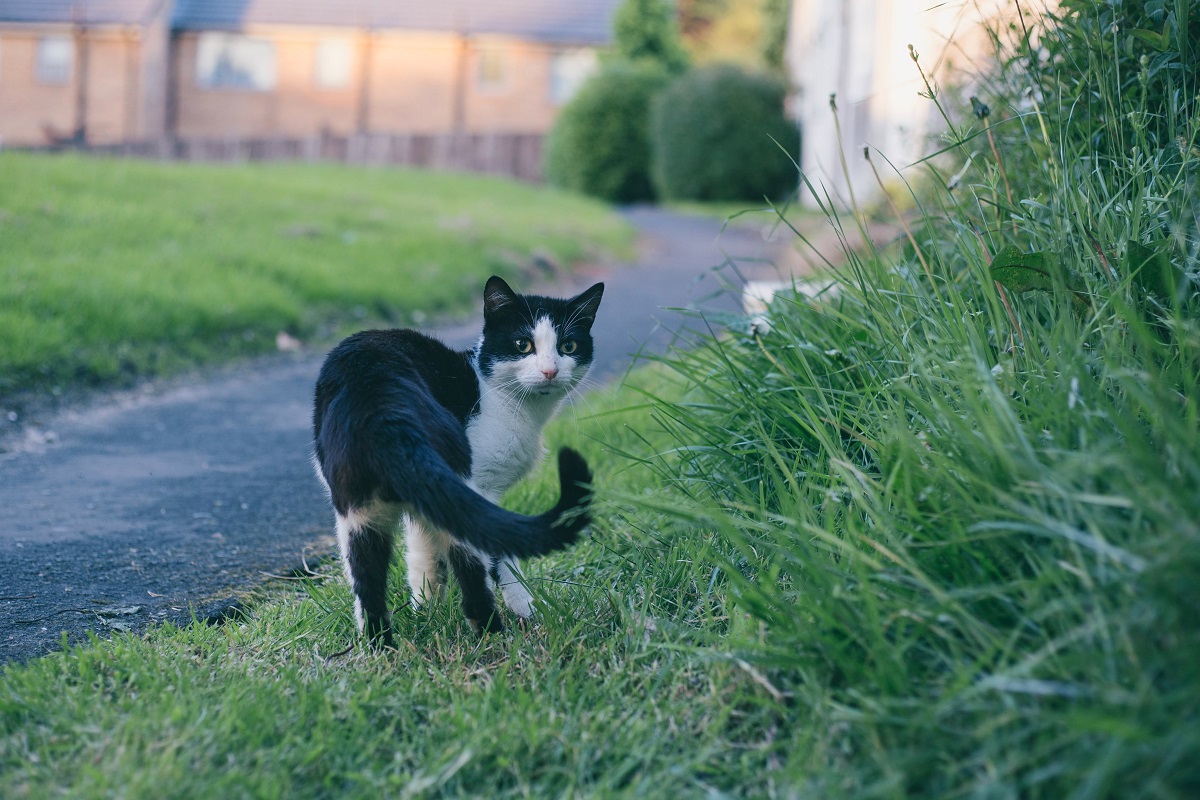Letting your cat outside can feel a bit like opening the gates for a tiny, unpredictable explorer who has no return ticket. Some cats treat the yard like their personal kingdom and stick close to home. Others are gone in a flash, off to chase birds, flirt with danger, or climb a tree they cannot get down from.
Giving your cat outdoor access safely is absolutely possible, but it takes planning, training, and a few smart boundaries. Whether your cat is desperate for some fresh air or you are just considering the idea, the goal is to let them enjoy the outdoors without putting them at risk or losing them entirely.
Let’s walk through the steps you can take to let your cat explore outside while still keeping them safe, healthy, and very much accounted for.
Understand Your Cat’s Personality Before You Start
Not every cat is cut out for outdoor life. Some are bold, adventurous, and endlessly curious. Others are more of the “peek out the door, then go nap in the closet” variety.
Before you let your cat outside, take an honest look at their personality:
- Confident cats may be more trainable for leash walks or supervised yard time
- Shy or anxious cats may panic if startled and bolt
- Former strays or rescues might revert to old roaming habits
- Cats with high prey drives might chase first and think later
If your cat has never been outside, assume they need a slow and structured introduction. The outside world is full of new smells, sounds, and distractions, and those can be overwhelming if introduced too quickly.
Make Sure Your Cat Has Identification and Is Microchipped
Before anything else, make sure your cat can be identified if they do happen to get spooked and take off. Even indoor-only cats should have a collar with a tag and be microchipped. It is a small step that can save a whole lot of heartache.
Things to check:
- The collar is breakaway style so it will not get caught
- The ID tag is up to date with your name and number
- The microchip is registered and updated with current info
If your cat is not already microchipped, talk to your vet about getting it done before you start any outdoor adventures.
Start With a Fully Controlled Space
One of the safest ways to introduce your cat to the outdoors is to use a catio, screened-in porch, or enclosed playpen. These spaces give your cat all the stimulation of the outside world without the risk of escape, injury, or run-ins with other animals.
If a full catio build is not in the cards, try:
- Portable outdoor enclosures
- Pop-up mesh tents
- Secure patios or balconies with cat-proof fencing
These setups are especially great for first-time explorers or cats who need a little extra security before they start roaming farther.
Leash Train Your Cat for Supervised Walks
Yes, cats can be leash trained. No, it is not just a dog thing. It does take time, treats, and a sense of humor, but leash walking is one of the best ways to give your cat outdoor time without letting them run wild.
Here is how to get started:
- Choose a well-fitting harness made for cats
- Let your cat wear the harness indoors first to get used to it
- Attach the leash and practice walking in your home or yard
- Reward them with treats and praise for calm behavior
- Keep sessions short and fun
Once your cat seems confident on the leash, you can expand your adventures to the yard or quiet areas nearby. Avoid busy sidewalks or areas with lots of dogs or noise at first.
Use the Backyard With Supervision and Clear Boundaries
If you have a fenced yard, you might be tempted to just let your cat roam. The better approach is to stay out there with them and establish boundaries over time.
Start with short, supervised sessions:
- Bring your cat out at a quiet time of day
- Stay nearby and watch their reactions
- Encourage them to explore gradually
- Use a clicker or treats to redirect them if they wander too far
- Make sure they can always see the door and get back inside easily
Over time, many cats will learn the perimeter of their “allowed zone” and stick close to home, especially if they know you are nearby and snacks are inside.

I was an outdoor kitty. It was fun at first. Then I couldn’t find my way home. And nobody brought me food. And it was cold. And wet. Then it wasn’t fun anymore. Luckily, I found my new Mom and Dad. And a warm place to nap. #IndoorKitty #OutsideIsScary
Joey
Consider a GPS Tracker for Extra Peace of Mind
If your cat is particularly curious or you are worried about them sneaking off, a GPS tracker designed for cats can be a game-changer. These small devices attach to their collar and let you keep tabs on their location in real time from your phone.
Some trackers even include boundary alerts so you will know the moment your cat leaves the designated safe area. It is not a substitute for supervision, but it adds a layer of security that can be really helpful.
What to Avoid When Letting Your Cat Outside
There are a few things you definitely want to steer clear of when introducing your cat to the outdoors:
- Do not let them outside unsupervised before they are fully trained
- Do not assume they will stay close just because they do the first time
- Do not skip flea, tick, and parasite prevention
- Do not use dog harnesses or collars that are too loose or tight
- Do not force your cat if they seem afraid or disinterested
Letting your cat outside should be an adventure, not a stressful or dangerous situation. If they are hesitant, it is okay to keep them indoors and find other ways to enrich their environment.
Final Thoughts: Freedom With a Safety Net
Letting your cat enjoy the outdoors does not have to be risky or chaotic. With the right setup, training, and supervision, you can give your cat the best of both worlds. They can chase bugs, sunbathe in the grass, and sniff every single plant without disappearing into the neighborhood never to be seen again.
Start small, go slow, and always make safety the top priority. Whether it is a harness walk, a screened porch, or a backyard hangout with you close by, your cat can enjoy a bit of freedom while still staying safe and close to home.
Sources:
How to Safely Walk Your Cat Outside https://www.humanesociety.org/resources/how-safely-walk-your-cat-outside
Training Your Cat for the Outdoors https://www.petmd.com/cat/behavior/how-train-cat-go-outside
Benefits of Outdoor Access for Cats https://www.icatcare.org/advice/outdoor-access-for-cats
GPS Tracking for Cats https://vcahospitals.com/know-your-pet/pet-gps-and-monitoring-devices
Recent Posts
Explore why cats sleep so much, including the evolutionary reasons and the health benefits they derive from their extensive sleep patterns.
Explore the causes of cat dandruff, its implications, and effective ways to deal with it so your feline friend remains happy and healthy.


